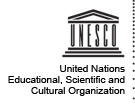IPDC Project beneficiary type: Professional associations
This project promotes the indigenous peoples’ right to to all forms of media and to produce their own media content, through building the capacity of the networks’ members in journalism skills and creating platforms and means for them to reach out to other relevant stakeholders.
Development Communication Society Nepal (SODEC-Nepal) intends to analyze the causes and consequences of impunity with in-depth analysis of the 35 cases of murdered journalists and the 4 missing journalists. It is anticipated that that this study will pressurize the government and state agencies to take the necessary legal steps to provide justice to the families of the
Suriname has 19 television stations, 34 radio stations, 4 newspapers, 9 community radio stations, approximately 10 journals and about 9 new media news sites. The State owns 1 radio station 1 one television station. The rest of the media is privately owned. About 150 journalists are working at the media. The media sector employs mostly ‘self-made’ media workers who largely need to be educated and trained. This need also originates from a strong increase in the number of news media in the previous years and consequently also the number of required journalists. The purpose of the media in...
Bolivia is the second Latin American country where the Media Development Indicators (MDI) were applied following the methodology developed by the United Nations for Education, Science and Culture Organization (UNESCO).
This study was carried out from June 2011 to June 2012 by the Bolivian Media Observatory (ONADEM in Spanish) from UNIR Bolivia Foundation and supervised by Rosa González, the Communication and Information Counselor for the UNESCO`s Representation of Andean countries.
After finishing the application, the 250 page report was submitted to a...
The impact of years of conflict is still evident in nearly every aspect of South Sudanese society. Although great efforts are underway to promote peace, security, reconstruction and development, these processes will be difficult without the establishment of a free media to create an atmosphere of peaceful co-existence and to institutionalize a culture of democracy. In particular, serious issues exist concerning the safety of journalists and media professionals and the impunity of those committing such crimes. Despite a constitution that guarantees press freedom, many journalists have been...
With ongoing politico-military upheavals in CAR, forms of violence against women have increased in number and gravity. Moreover, most women experience scenes of violence within their own homes. Such violence makes women and young girls vulnerable and suppresses any desire or capacity to seek emancipation and financial independence. This project proposes to raise public awareness in CAR of violence against women by reinforcing the investigation methods of female journalists.
While the DRC has begun to enjoy media pluralism, instances of abuse are frequent due to the lack of neutrality and objectivity in the media. This project will therefore provide Congolese media professionals with training concerning peace journalism in order to promote their awareness of their role in the ongoing peace and reconciliation process, to strengthen their capacity and understanding with regard to conflict-related issues. and to acquaint them with the standards and principles upon which peace journalism is based.
Nepal’s media sector is large and growing rapidly. However, many people are entering the sector without even basic journalism training. This is because there are few journalism training institutes in Nepal. To address this shortcoming and thereby improve the quality of the media sector in Nepal, this project will train new journalists from five districts of Nepal.
